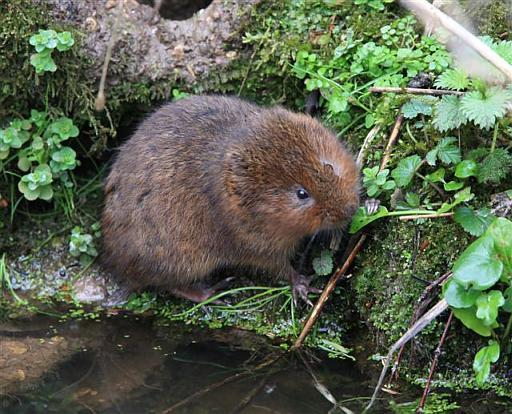The race to save “Ratty” is being run in Fife, as the region rolls out its bio-diversity action plan.
Water voles, immortalised by the erroneously-named character in The Wind in the Willows, are under threat by “ferocious” feral mink, a species introduced from America as a result of the fur trade.
To boost water vole populations, Fife Coast and Countryside Trust (FCCT) has encouraged landowners to set mink traps and is carrying out a year-long water vole survey along rivers and streams.
Trapping has already proved effective in north-east Fife, where water vole populations have started to recover.
The FCCT plans to build on this work throughout Fife, including in Glenrothes, where funding from the local area committee has been granted for mink control along the River Leven.
Fife Council senior resources manager Chris Broome said, “Feral mink, either deliberately introduced into the wild or escapes from fur farms, are a voracious predator that can have a devastating effect on water voles and other native wildlife.
“One of the key actions in the work on water voles under the local biodiversity action plan (LBAP) is a mink trapping programme.”
Mr Broome said, “Fife Council and FCCT will over the coming months be running a series of events and activities as part of international year of biodiversity for communities and individuals to learn more about the rich tapestry of life around us, and get involved in monitoring and conserving local wildlife.”
The LBAP was prepared by Fife Biodiversity Partnership which, along with the council and FCCT, involves agencies such as Scottish National Heritage, the Forestry Commission, the Royal Society for the Protection of Birds and Scottish Wildlife Trust.
Habitats singled out for protection include ancient woodlands, species rich grasslands, freshwater habitats, heath and moorland, and parks.
Prioritised species in the LBAP include bluebells, aspen, great crested newts and red squirrels
Despite being threatened by the introduction of grey squirrels from the United States in the late 19th century, red squirrels are still to be found in Fife woodlands including Ladybank, Tentsmuir, Falkland, Reres and Devilla Forest.
Mr Broome said, “The Fife red squirrel project officer, together with The Fife Red Squirrel Group, is working to promote and protect the red squirrel by increasing public awareness, surveying and monitoring, delivering an education programme and implementing a conservation strategy that will focus initially around Fife’s core red squirrel areas.”
